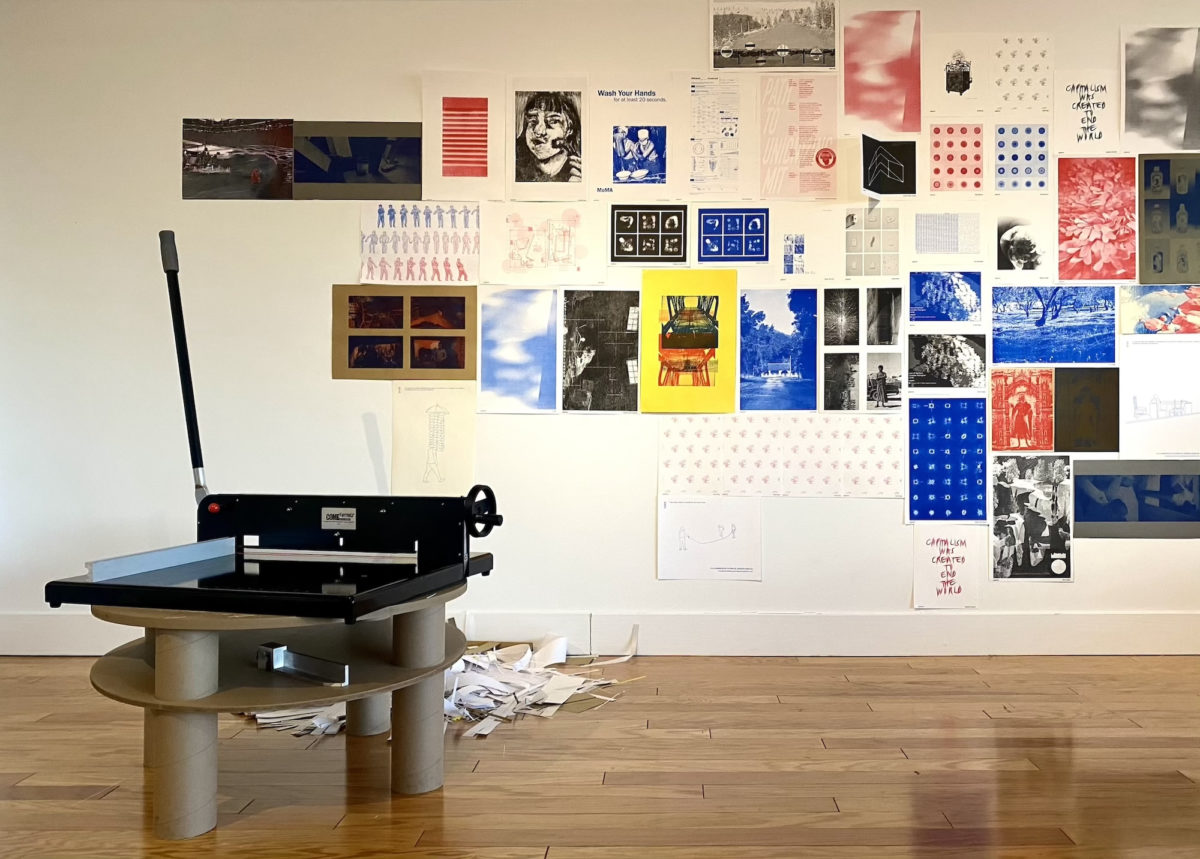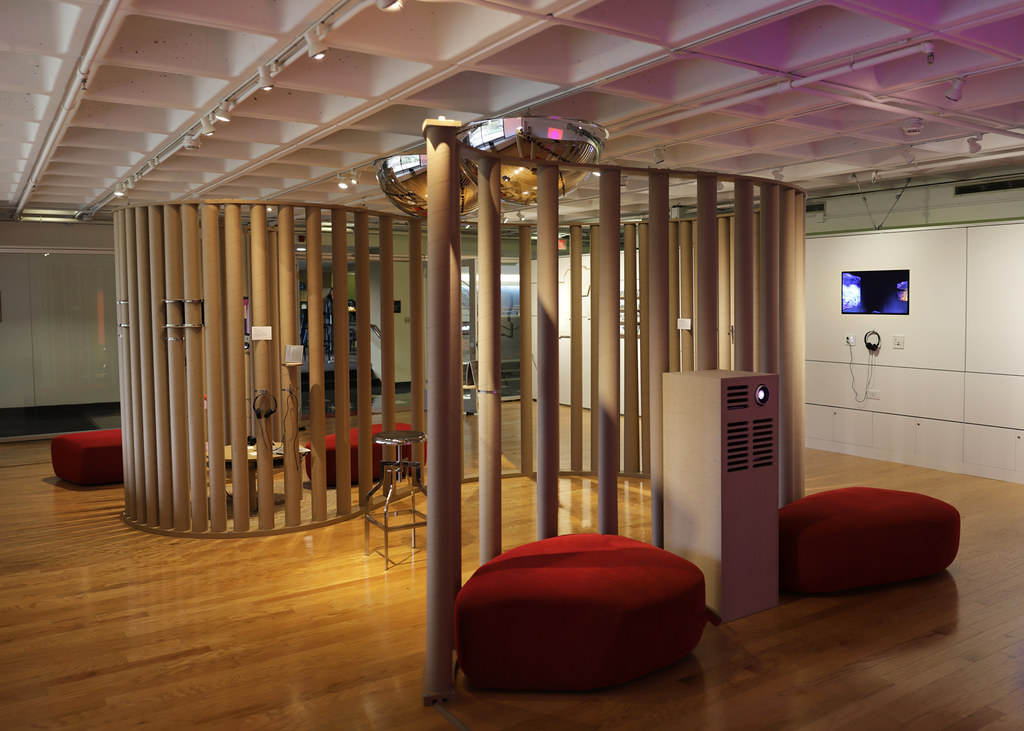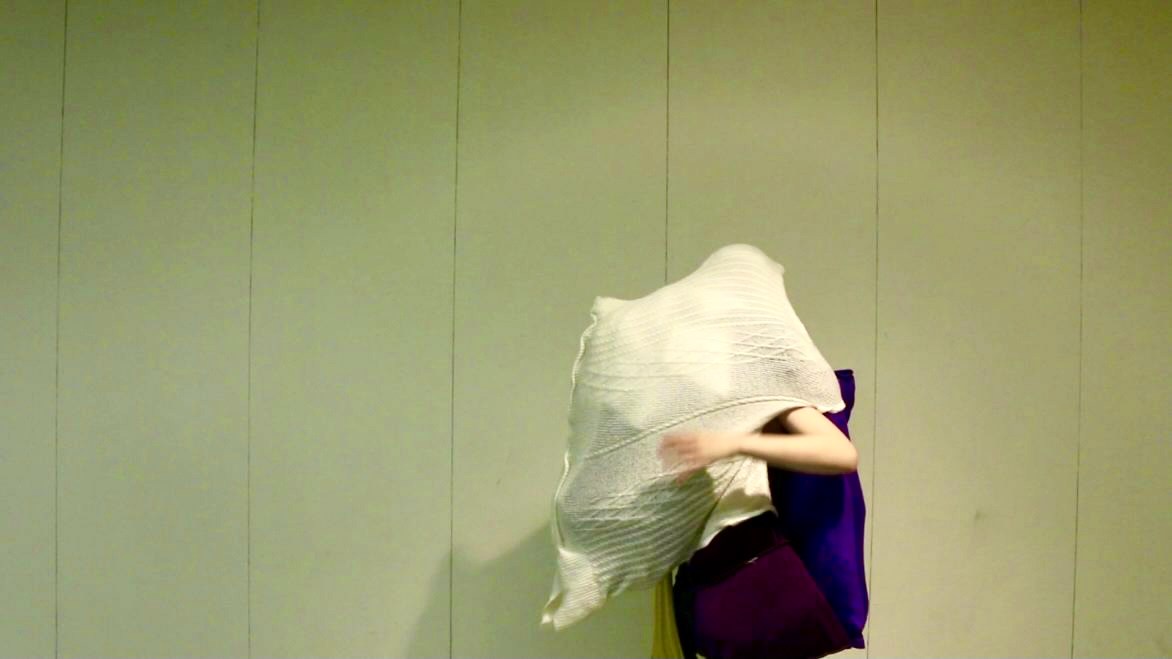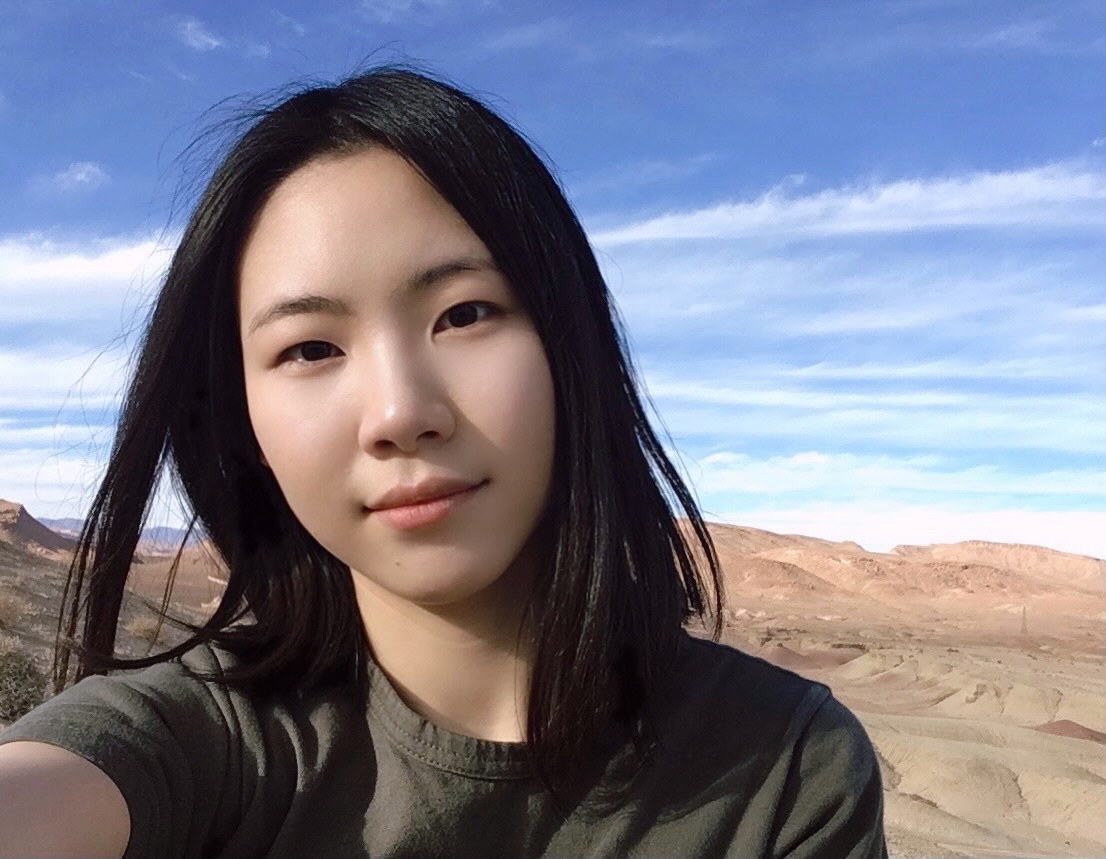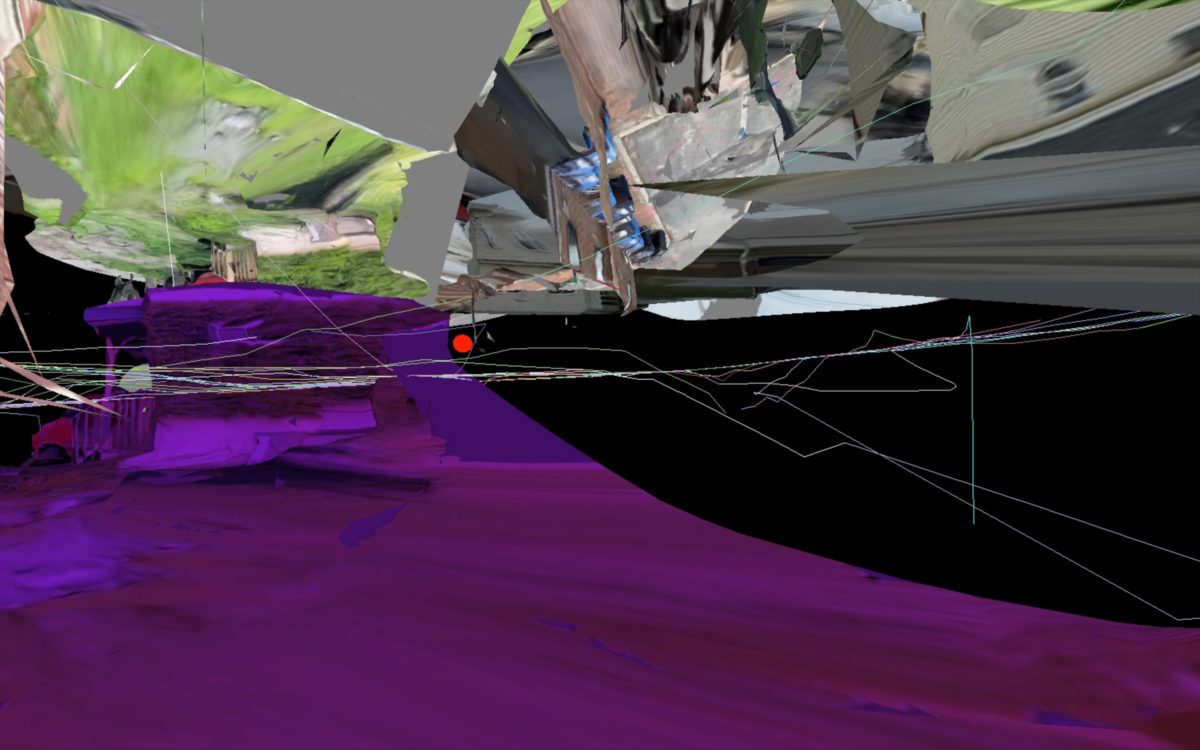Artist and architect Emma Yimeng Zhu 朱艺蒙 is challenging us to reimagine our world.
Emma Yimeng Zhu 朱艺蒙 (SMACT ’21) is fascinated by lines. By the boundaries they form, by the blurring of them, and by how we might look and think about them differently. She became intrigued by the relationship between the human body and the built environment as an undergrad in architecture school. At MIT, in the Art, Culture, and Technology program (ACT) in the Department of Architecture, she was able to not only expand upon her ideas, but manifest them. Today, she works both in architecture and visual art and makes video, installations, as well as co-founding 坐北朝南 an architectural design studio in Beijing that soon hopes to open a branch in the United States.
The Founding of ppppress
Zhu is also someone who “brings out the best in others…[she] gets a project from concept to delivery,” says Sarah Hirzel, Curator of the MIT Wiesner Student Art Gallery. She is a strong collaborator and brought to fruition ppppress, a publishing press, with her fellow classmates, Chucho Ocampo, Po-Hao Chi, and Aarti Sunder that was the focus of a recent exhibit at the gallery.
“ppppress dances between digital and analog, high tech and craft, silkscreen and photocopy,” according to that exhibit’s wall text. The idea for the press came about in the summer of 2020, in the midst of the COVID lockdown. “We needed something tangible to keep us connected during that really depressing summer,” said Zhu.
“The intention, initially, of [ppppress] was quite unusual,” says Zhu. The four of them became interested in the Center for Advanced Visual Studies (CAVS) Special Collection archive, which contains 45-years-worth of material from over 200 artists. György Kepes founded CAVS, a predecessor of ACT. ACT came from the merger of CAVS and the Visual Arts Program (VAP). The old-fashioned materiality and the interdisciplinary aspects of the archive appealed to Zhu and her collaborators. They learned about the history and struggle of creating a physical space at MIT for an unconventional art program. “That’s what we wanted to reenact as part of this show,” says Zhu. CAVS archivist Thera Webb gave Zhu and her colleagues access to the archives and they manipulated the different materials to recreate a fictional version, or their interpretation of the contents and events.
ppppress (the name “potato, potato, potato press” was coined one COVID dinner when Zhu and her classmates only had potatoes to eat) centers around a Risograph, a photocopier/printer based on Japanese printmaking techniques. Loved by artists because of its highly saturated color, its beautiful pigmentation, and its irregularities in output, it was the perfect tool for their press. Finding a Risograph during COVID was a challenge, but Zhu and her classmates were able to lease one for a multi-year contract with the help of funding from the Council for the Arts at MIT (CAMIT), ACT, and the Department of Architecture.
Translating Ideas into Realities
Zhu was born and raised in Beijing. She always knew she would go to architecture school because both of her parents are architects and, as she said, “they have a happy life.” But when she got to Cornell (‘19), she was drawn less to the architectural studio and more to the other art classes—whether fine arts, music, or fabric. She became intrigued by performance art, especially the Judson Dance Theater from the 1960s, and realized she was interested in the interplay between the physical body and the space around it. Although her undergraduate degree prepared her to work in a big architectural firm, she wanted to expand her interdisciplinary art practice, so she applied to ACT.
In her first class at MIT, How To Make (almost) Anything, Zhu was introduced to all kinds of making, from fabrication to programming to learning to communicate with people across the campus. “MIT supports students in taking the lead, in making decisions, in getting involved in everything,” says Zhu. She collaborates with faculty who have noticed her gift for making ideas happen. In one collaboration she supported the Transmedia Storytelling Initiative, an interdisciplinary project founded in part by faculty from the MIT School of Architecture. Zhu was instrumental in the creation of a recent Wiesner Gallery exhibition (Unbounded Transmedia) documenting the Initiative and a symposium (Boundary Conditions) on virtual productions, which supports the creation of narrative work in new forms, including virtual reality, video, sculpture, even comic books. Zhu was a critical part of the exhibition’s success, using her wide range of skills from architecture to video editing to support the program’s faculty leadership and student participants.
Through Zhu’s exposure to the technology part of ACT, (RunwayML, Python, simulation modeling programs, etc.), she was finally able to take her abstract thoughts about lines and present them in a physical format. Her video, A Pilgrimage to the Bed, was a journey through her house with different camera angles, shooting equipment, and perspectives. The viewer observed the house from inside out—from the system circulation to the materiality of objects. Her body itself never appeared, but the viewer experienced the video as a body navigating that space.
In her virtual installation, Space In-Between the Lines, she took this exploration a step further. Here Zhu collected images of lichen from different databases, and added them to her traditional architectural data set of images and plan diagrams. Then she used an algorithm to create a combined version that was lichen-infused. Instead of pure vector lines, she now had furry, fuzzy, shedding lines. Her goal with this work was not to have an answer, but to force inquiry. In the midst of her time at ACT, Zhu also had a residency in the highly prestigious Pioneer Works artist residency program in Brooklyn, New York.
Post MIT Collaborations
Zhu continues to explore boundaries and collaborate. One of her many projects today, in addition to being a media assistant and postgraduate resident at ACT, is helping CAFA, Central Academy of Fine Arts, in Beijing to organize an exhibition (Eco Vision Plan), for which she also is helping to write the catalog and textbook.
In mid-January, Zhu helped lead workshops on the Risograph. She and her fellow alums are nurturing the next generation of students to run ppppress and are working to acquire other tools for their press as well as a permanent space. ppppress started out as a way for Zhu and her classmates to collaborate during COVID, but became so much more: showcasing the history of the arts at MIT; bringing together scientists, artists, and researchers across the MIT community; and creating a new way to publish on the campus. Zhu uses her inquiry, and ingenuity, to turn ideas into tangible, shareable experiences. Her contributions to the MIT arts and architecture community have supported both her own growth as an artist and her colleagues and friends as they collaborate to bring ideas to life.
By Sarah Baker
Editorial Direction by Leah Talatinian, Arts at MIT

